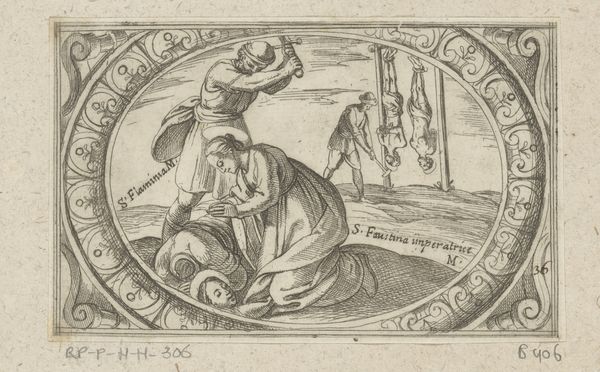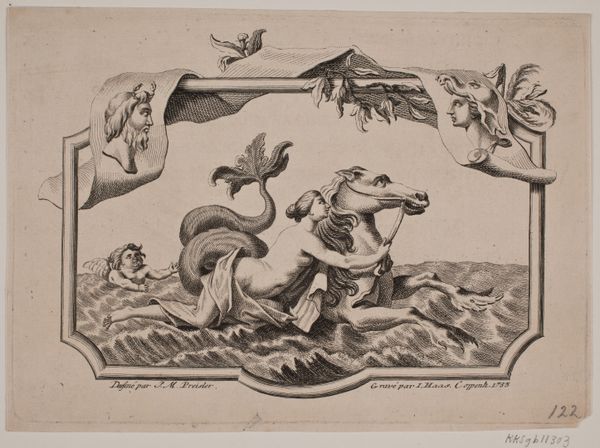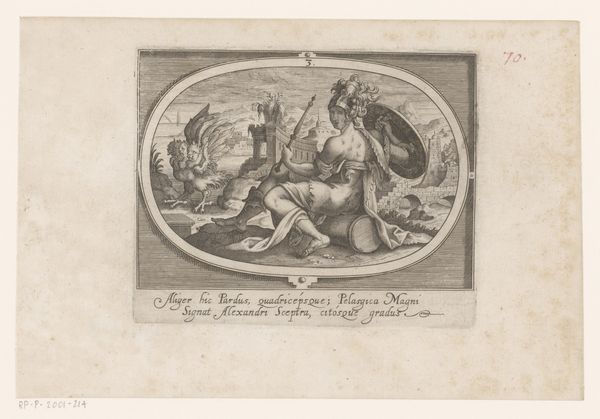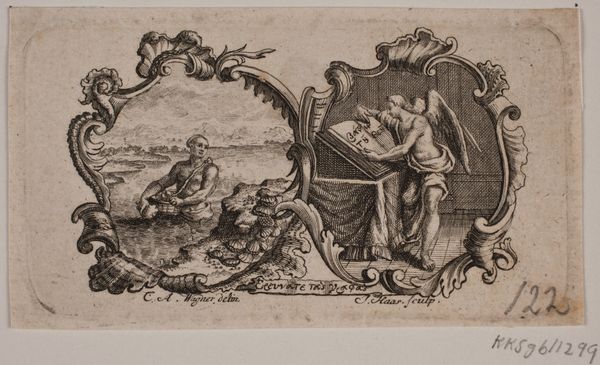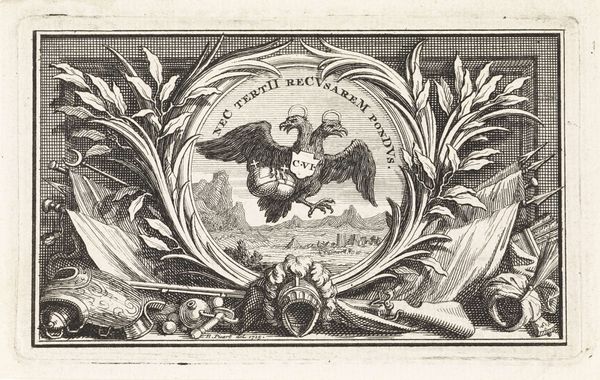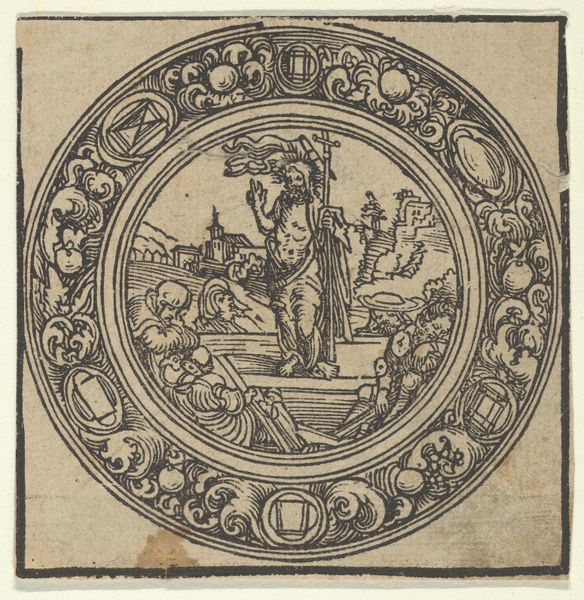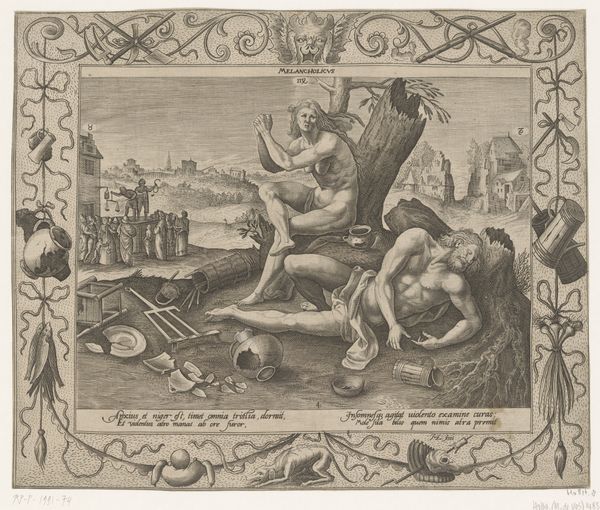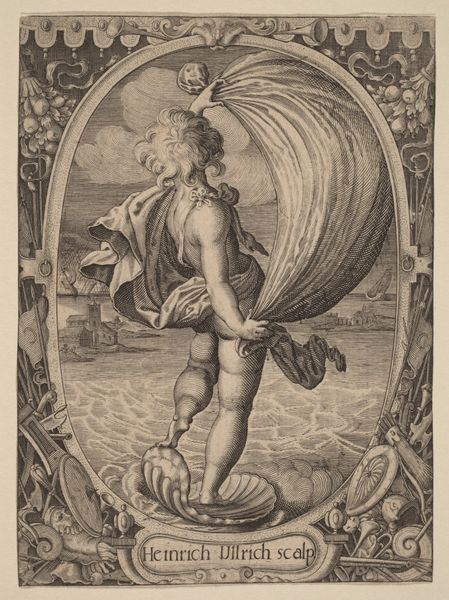
Eros Escaping by Sea; Cupid using his bow to propel a boat made from his quiver with an arrow as the mast and his blindfold as the sail, a banderole above 1510 - 1532
0:00
0:00
drawing, print, engraving
#
drawing
#
boat
#
allegory
# print
#
figuration
#
cupid
#
italian-renaissance
#
engraving
Dimensions: Sheet: 5 1/16 × 6 13/16 in. (12.9 × 17.3 cm) Plate: 4 15/16 × 6 5/8 in. (12.5 × 16.9 cm)
Copyright: Public Domain
This engraving of "Eros Escaping by Sea" was made by Marco Dente around 1515-1527. Cupid is shown using his bow to propel a boat made from his quiver. This image is a product of the Italian Renaissance, a time when classical mythology and humanist thought were resurgent. Consider the politics of imagery at this time. Dente’s print, like many Renaissance artworks, draws on classical sources, repurposing them for a contemporary audience. The figure of Cupid, derived from classical antiquity, is reimagined here, not as a symbol of love's triumph, but of its fleeting and capricious nature. The Latin inscription above translates to "violent flight warns thus". The engraving technique itself is significant. Prints like this were easily reproduced and widely circulated, allowing for the rapid dissemination of ideas and images across Europe. To fully understand this piece, we might research emblem books, popular at the time, which paired images with moralizing texts. The meaning of art is contingent on its social and institutional context.
Comments
No comments
Be the first to comment and join the conversation on the ultimate creative platform.
